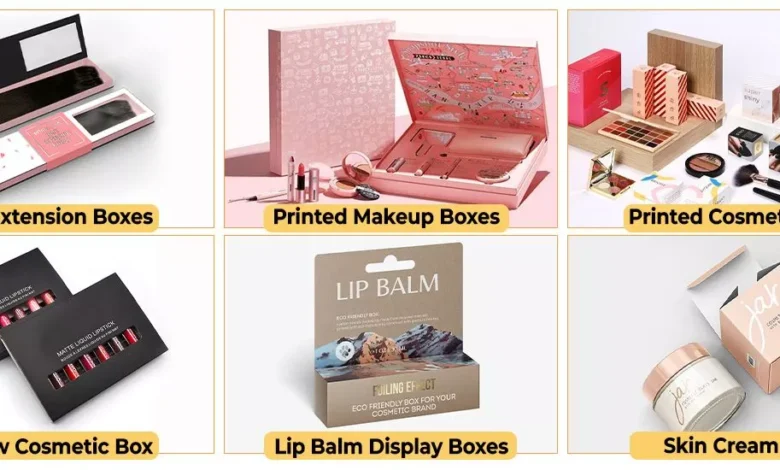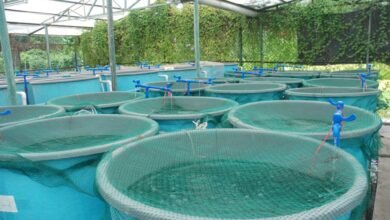
In the competitive world of cosmetics, presentation is everything. Whether you’re a small indie brand or a well-established company, the packaging of your products plays a crucial role in attracting customers and setting your brand apart. custom cosmetic box packaging offers a unique opportunity to showcase your brand identity and enhance the perceived value of your products. However, choosing the right material for your custom cosmetic boxes is essential to ensure both aesthetic appeal and functional durability. In this article, we’ll explore various materials commonly used for cosmetic packaging and their suitability for different purposes.
Understanding the Importance of Cosmetic Packaging
Before delving into the specifics of materials, let’s first understand why cosmetic packaging is so vital for your brand. Beyond simply containing and protecting your products, packaging serves as a powerful marketing tool. It communicates your brand’s identity, values, and aesthetic to consumers at a glance. Well-designed custom cosmetic boxes can create a memorable unboxing experience, fostering a sense of luxury and exclusivity.
Common Materials for Custom Cosmetic Box Packaging
1. Cardboard
Cardboard is one of the most popular materials for custom cosmetic boxes due to its versatility and cost-effectiveness. It can be easily customized with various printing techniques, making it ideal for showcasing intricate designs and vibrant colors. Additionally, cardboard boxes are lightweight yet sturdy enough to protect delicate cosmetic products during shipping and handling.
2. Paperboard
Paperboard, also known as chipboard or carton board, is another common choice for custom cosmetic box packaging. It offers a smooth surface for high-quality printing and is available in different thicknesses to suit your needs. Paperboard boxes are lightweight and eco-friendly, making them a popular option for brands looking to minimize their environmental footprint.
3. Plastic
Plastic boxes provide a sleek and modern look for custom cosmetic packaging. They offer excellent clarity, allowing customers to see the products inside, which can be particularly appealing for items like lipsticks or eyeshadows with vibrant colors. However, it’s essential to consider the environmental impact of plastic packaging and opt for recyclable or biodegradable options whenever possible.
4. Metal
Metal packaging, such as tin or aluminum boxes, exudes luxury and durability. While less common than cardboard or plastic, metal custom cosmetic boxes are highly customizable and offer superior protection for delicate products. They are also reusable and recyclable, making them a sustainable choice for eco-conscious brands.
5. Glass
Glass packaging adds a touch of sophistication to custom cosmetic boxes and is particularly suitable for high-end skincare products or perfumes. It offers a premium look and feel and provides excellent protection against light and air exposure, preserving the integrity of the contents. However, glass is heavier and more fragile than other materials, so careful consideration must be given to shipping and handling.
Factors to Consider When Choosing Packaging Material
When selecting the material for your custom cosmetic boxes, several factors should be taken into account:
- Brand Image: Consider how each material aligns with your brand’s identity and target market. For example, eco-friendly brands may opt for recyclable paperboard or biodegradable plastics.
- Product Type: Different cosmetics require different levels of protection. Fragile items like pressed powders or glass bottles may require sturdier packaging materials to prevent breakage.
- Shipping and Handling: If your products will be shipped long distances or handled frequently, prioritize materials that offer durability and impact resistance.
- Environmental Impact: Choose materials that are sustainable and eco-friendly whenever possible to minimize waste and reduce your carbon footprint.
Why Custom Cosmetic Box Packaging Sustainability is Important
In the bustling world of cosmetics, where innovation meets beauty, packaging plays a pivotal role. Custom cosmetic box packaging serves as more than just a vessel; it’s a statement, an experience, and a reflection of the brand ethos. However, in today’s environmentally conscious landscape, sustainability has emerged as a crucial consideration for both consumers and manufacturers alike. This article delves into the significance of sustainable cosmetic packaging and explores the materials that can be used to achieve this goal.
Why Sustainability Matters?
- Environmental Impact: Traditional packaging materials like plastic and non-recyclable paper contribute significantly to environmental degradation. From pollution to habitat destruction, the extraction, production, and disposal of these materials pose grave threats to ecosystems.
- Consumer Preferences: With increased awareness about environmental issues, consumers are actively seeking eco-friendly alternatives. Brands that prioritize sustainability not only cater to this growing demand but also enhance their reputation as responsible entities.
- Regulatory Compliance: Governments worldwide are imposing stricter regulations on packaging materials to curb pollution and promote sustainability. Adhering to these regulations is not just a legal requirement but also a moral obligation for companies.
- Brand Image and Loyalty: Embracing sustainability can differentiate brands in a crowded market. By showcasing their commitment to the planet, companies can foster stronger connections with environmentally conscious consumers, thereby increasing brand loyalty.
Sustainable Packaging Materials
- Recycled Paper and Cardboard: Utilizing recycled paper and cardboard for custom cosmetic box packaging reduces the demand for virgin materials, conserves resources, and minimizes waste. These materials are biodegradable and recyclable, offering a sustainable alternative to conventional packaging options.
- Biodegradable Plastics: Bioplastics derived from renewable sources such as corn starch or sugarcane offer a biodegradable alternative to traditional plastics. These materials break down into natural components over time, reducing the environmental impact of packaging waste.
- Plant-Based Materials: Plant-based materials like bamboo, hemp, or bagasse (sugarcane residue) are renewable and biodegradable. These materials require fewer resources to produce and decompose naturally, making them environmentally friendly choices for cosmetic packaging.
- FSC-Certified Wood: The Forest Stewardship Council (FSC) certification ensures that wood products come from responsibly managed forests. Choosing FSC-certified wood for packaging demonstrates a commitment to forest conservation and sustainable resource management.
Final Verdict
Choosing the right material for custom cosmetic box packaging is a crucial decision that can significantly impact your brand’s success. Each material offers unique advantages and considerations, so it’s essential to weigh your options carefully based on your brand image, product requirements, and environmental values. Whether you opt for cardboard, paperboard, plastic, metal, or glass, prioritize quality, aesthetics, and sustainability to create packaging that enhances the overall customer experience and sets your brand apart in the competitive cosmetics market.




